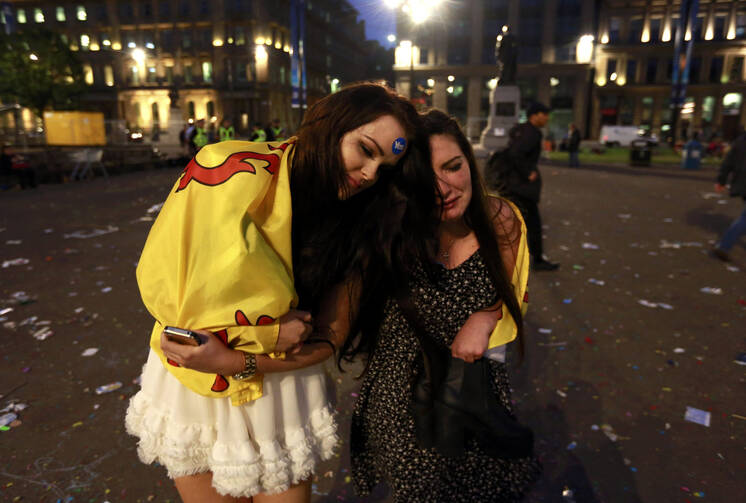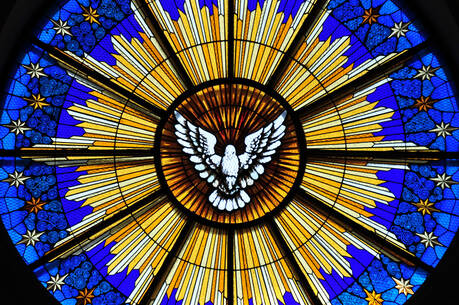Scotland voted last Thursday, by 55 percent to 45 percent, to remain part of Great Britain. Here are a few takeaways that could be relevant to American politics.
The bungee-jump factor. In a postmortem on the Scotland vote, FiveThirtyEight.com’s Carl Bialik and Harry Enten discuss why polling may have overestimated the pro-independence side. “Among 100 people who paid for a bungee jump, a handful are likely to get to the edge and decide they’d rather not jump,” they write, using a comparison made by pollster Damian Lyons Lowe. “We weren’t able to show that freaking-out effect,” Lowe says.
Bialik and Enten noted that in eight pre-Election Day surveys, an average of 44 percent favored independence and 48 percent had decided to vote no, theoretically leaving about eight percent up for grabs. But: “Although it would be tempting to proportionally allocate undecideds to ‘no’ and ‘yes’ and think the race was close, history tells us that would have been a mistake.”
Because pollsters have not come up with a way to quantify the “freak-out effect,” those on the side of significant change, in America and elsewere, are often unduly optimistic on Election Day mornings. Based on polls, they expect incumbents to fall and controversial ballot proposals to prevail. In the worst-case scenario, they may become more cynical and bitter about the election system when it appears that victory has been snatched from them at the last minute.
Secessionist movements are everywhere. Reuters polled Americans during the campaign in Scotland and announced that 23.9 percent wanted their respective states to secede from the U.S. “It’s a situation that could get dangerous,” writes Reuters blogger Jim Gaines. He noted that 53 percent of those who identified with the Tea Party favored secession. Based on phone interviews with respondents, Gaines described the alleged breakaway faction:
Those we spoke to seemed to have answered as they did as a form of protest that was neither red nor blue but a polychromatic riot — against a recovery that has yet to produce jobs, against jobs that don’t pay, against mistreatment of veterans, against war, against deficits, against hyper-partisanship, against political corruption, against illegal immigration, against the assault on marriage, against the assault on same-sex marriage, against government in the bedroom, against government in general — the president, Congress, the courts and both political parties.
I don’t dismiss the Reuters survey, but I suspect that a lot of the respondents aren’t actually bungee-jumpers. The survey finds that support for secession is highest (34 percent) in the Southwest, which includes the anti-Obama states of Arizona, Oklahoma, and Texas, and is lowest (19 percent) in New England, which the president swept in 2012. That’s not how I remember things after George W. Bush won a second term in 2004. A lot of my fellow New Englanders passed around a map suggesting that we break off from “Jesusland” and join Canada. The point is that the American political system makes it extremely difficult for a political party to hold unchecked power for very long, and local discontent tends to rise and fall depending on the outcome of national elections. But if the Republicans win the White House in 2016 and secessionism increases in Texas, I’ll start to get worried.
It’s always the economy, stupid. To Americans, the independence movement may have been all about Scottish pride, but many commentators closer to the action pointed to economic conditions in Scotland — along with resentment toward wealthier England and a bitterness at being taken for granted by Britain’s Labour Party, which has moved to the center in recent years. In the Washington Post, political scientist and native Scotsman Graeme Robertson wrote that in the “Yes” campaign, “the stress was not on nationalism, but on shaping a new progressive politics that rejected the austerity and sterility of politics as usual. Contrary to accusations of petty nationalism leveled in some quarters at the Yes campaign, disgust with the Westminster system was the main factor cited in polls as driving Yes voters.”
Before the vote, the Atlantic’s Katie Engelhart looked at polling data suggesting that some Scots were voting their pocketbooks:
This referendum is not a proxy class war — but class is an important indicator of Yes/No allegiance. In general, the poorer the Scot, the more likely she is to vote ‘yes.’ The Economic and Social Research Council found that 46 percent of low-income Scots support independence, compared with 27 percent of high-earners. It’s no secret that the Highlands high rollers are largely voting ‘No.’ “The buggers are out to get us!” one “pre-eminent” duke told the Tatler, referring to ‘Yes’ campaigners. Mark Diffley, director of Ipsos MORI Scotland, has described the relative wealth of a voting district as “the variable that really explains what’s going on.”
Perhaps those more likely to bungee-jump are those who have little to lose.
Guerrilla marketing doesn’t always mix with politics. A few days before the vote, the Atlantic’s Sam Sturgis authored a photo essay on the chalk-written “Yes” messages that sprang up overnight on the sidewalks and walls of Edinburgh (e.g., Be Brave “Yes” GOD AGREES). This kind of streetscape debate is rare in the United States, where fights over the legality of political signs on private as well as public property arise every election year. I’d find it refreshing to see chalk messages and homemade signs in my neighborhood before an election, though they would hardly match the millions spent on TV commercials and junk mail. But I think most Americans would see even easily washable chalk messages as brute vandalism. The Department of Homeland Security might even get involved. (Is “vote yes” actually a coded message for terrorists?)
And maybe the chalk campaign backfired in Edinburgh, which voted 61-39 against independence.
Offer a simple, dramatic choice and voters will turn out. An estimated 85 percent of Scotland’s electorate turned out to vote on the referendum, compared with about 59 percent in the last American presidential election. In a post called “The Clear Winner in Scotland’s Referendum: Brevity,” the Washington Post’s Emily Badger cheers the simplicity of the ballot question: “Should Scotland become an independent country?” That’s in contrast to the 119-word referendum on whether to legalize marijuana facing Colorado voters in 2012.
An 85-percent turnout would be so different from the American norm that it’s safe to say that both parties would be afraid to chance the results. So don’t expect the United States to ever put a six-word referendum before its citizens.








